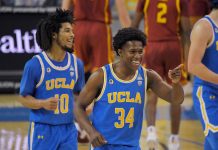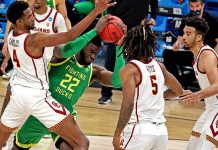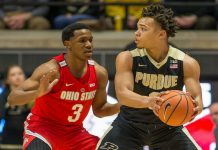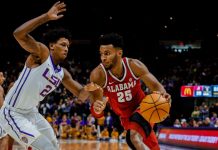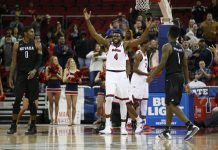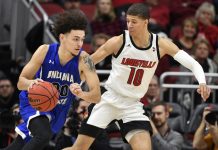Glenville State is working to clear Phil Bledsoe after the Division II college basketball player mistakenly used a new NCAA rule permitting only Division I players to declare for the NBA draft and sign with an agent while maintaining college eligibility.
Compliance coordinator Bill Lilly told The Associated Press the school submitted a reinstatement request to the NCAA on Thursday, a process he says first requires a school to declare an athlete ineligible in order to ultimately clear him for competition. Lilly says the request cites ”misadvisement,” meaning he offered incorrect guidance to the 6-foot-6 junior amid confusion about the rule adopted in August following a federal corruption investigation into the sport.
It’s unclear exactly when a ruling could come, though Lilly estimated it could take seven to 10 days.
”We don’t have any idea what the NCAA will do with the case,” Lilly said. ”But we hope they don’t penalize a kid for a mistake he didn’t make. That one was made on my end, not on his. He didn’t try to sneak around and take 100 bucks or 1,000 bucks under the table or anything.”
NCAA spokeswoman Stacey Osburn declined to comment because the organization typically doesn’t publicly discuss individual cases.
Bledsoe followed guidelines to use the rule before seeking out Maryland-based agent Jerry Dianis, then decided to return for his senior season at the West Virginia school of about 1,800 students. Bledsoe was among 89 early entrants to withdraw from the draft by Wednesday night’s deadline to preserve college eligibility, according to a list from the NBA released Thursday evening.
The agent rule was implemented amid numerous reforms proposed by the basketball commission led by former U.S. Secretary of State Condoleezza Rice. It permitted certified agents to work with players and cover minimal expenses for team workouts, though those contracts must end when the player returns to school.
In the NCAA’s legislative database, all three divisions have a starting point of General Rule 12.3.1, which prohibits athletes from agreeing verbally or in writing to be represented by an agent.
The Division I rules include the new exception permitting players to sign with an NCAA-certified agent (Section 12.3.1.2) while maintaining eligibility, but that exception doesn’t appear for Division II and Division III. Additionally, the NCAA has at times used broad terms such as ”basketball student-athletes” and ”college basketball players” regarding the rule without explicitly stating it is unavailable outside of Division I.
Osburn said Wednesday the lower divisions will evaluate the rule’s impact in its first usage through Division I before considering whether to adopt it.
”It’s in the hands of the NCAA and we’re waiting on a ruling there to see how we proceed,” Lilly said. ”We hope it works out for the best, and that we all learn from it.”
—
More AP college basketball: https://apnews.com/CollegeBasketball and http://www.twitter.com/AP-Top25
—
Follow Aaron Beard on Twitter at http://www.twitter.com/aaronbeardap
25% Bonus via Western Union


